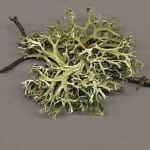| Common Name: |
Oak Moss |
| Botanical Name: |
Evernia prunastri |
| Genus: |
Evernia |
| Family: |
Usneaceae |
| Cultivation: |
Grows mainly on trunks of deciduous trees, mainly oak, sycamore, maple, willow and alder; also on fences, walls, rocks, and soil. Prefers neutral substrate. Plants are damaged by sulphur levels above 0.021 p.p.m. |
| Propagation: |
The ecology and reproductive biology of lichens are complex; little progress has been made in their propagation and cultivation. |
| Width: |
6cm (2½in) |
| Hardiness: |
Z4-10 |
| Parts Used: |
Whole Plant, oil |
| Properties: |
An aromatic, antibiotic herb containing lichen acids that inhibit the tuberculosis bacillus. |
| Culinary Uses: |
Traditionally used as a leavening agent for bread, and as a hops substitute in beer. |
| Economic Uses: |
Mainly as a fixative in perfumes with a mossy note, such as chypre, ambre, and Fougère. Extracts are also used for flavoring int he food and beverage industries. |
| Bibliography: |
Encylopedia of Herbs by Deni Brown Copyright © 1995, 2001 Dorling Kindersley Limited. pg. 211 |

